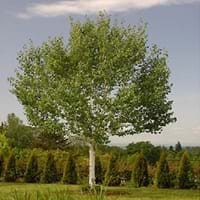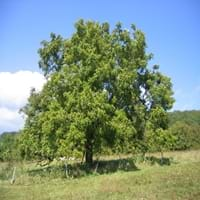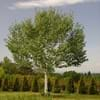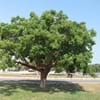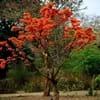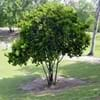Life Span
Perennial
Perennial
Origin
India, Nepal, China
Europe, Eastern Europe, Southern Europe, Russia/Siberia, Iran, Central Asia, Southern Asia, Western Asia, India, Nepal, China
Types
Not Available
Black walnut
Habitat
Mountains
Cold Regions, Hills, Hillside
USDA Hardiness Zone
5-7
4-8
Sunset Zone
3a, 3b, 4, 5, 6, 7, 8, 9, 10, 11, 14, 15, 16, 17
1a, 1b, 2a, 2b, 3a, 3b, 4, 5, 6, 7, 8, 9, 14, 15, 16, 17, 18, 19, 20, 21
Habit
Pyramidal
Oval or Rounded
Flower Color
Tan, Brown
Yellow green
Flower Color Modifier
Bicolor
Bicolor
Fruit Color
Not Available
Green, Brown
Leaf Color in Spring
Yellow green
Green, Copper
Leaf Color in Summer
Dark Green
Dark Green
Leaf Color in Fall
Yellow
Dark Green, Yellow green
Leaf Color in Winter
Not Available
Not Available
Leaf Shape
Cordiform
Pinnate
Plant Season
Spring, Summer, Fall, Winter
Spring, Summer, Fall
Sunlight
Full Sun, Partial Sun
Full Sun
Growth Rate
Medium
Medium
Type of Soil
Loam, Sand
Clay, Loam, Sand
The pH of Soil
Acidic, Neutral
Acidic, Neutral
Soil Drainage
Average
Well drained
Bloom Time
Early Spring
Late Spring, Early Summer
Tolerances
Not Available
Drought, Frost
Where to Plant?
Ground
Ground
How to Plant?
Grafting, Stem Cutting
Budding, Seedlings
Plant Maintenance
Medium
Medium
Watering Requirements
Requires watering in the growing season
Requires watering in the growing season, Water Deeply, Water when top layer of soil becomes dry
In Summer
Average Water
Lots of watering
In Spring
Moderate
Moderate
In Winter
Average Water
Average Water
Soil pH
Acidic, Neutral
Acidic, Neutral
Soil Type
Loam, Sand
Clay, Loam, Sand
Soil Drainage Capacity
Average
Well drained
Sun Exposure
Full Sun, Partial Sun
Full Sun
Pruning
Remove damaged leaves, Remove dead branches, Remove dead leaves
In Early Autumn, Prune to stimulate growth, Remove dead leaves
Fertilizers
Fertilize in early spring, Fertilize in late fall, slow-release fertilizers
fertilize in spring, Nitrogen
Pests and Diseases
Honey fungus, Leaves with brown tip, Phytophthora Root Rot, Powdery mildew, Verticillium Wilt
Anthracnose, Armillaria mellea, Blight, Caterpillars, Crown gall, Crown rot, fungus, Powdery mildew, Red blotch
Plant Tolerance
Dry Conditions, waterlogging, Wet Site
Drought, Frost
Flowers
Insignificant
Insignificant
Flower Petal Number
Not Available
Not Available
Foliage Texture
Medium
Coarse
Foliage Sheen
Matte
Glossy
Attracts
Not Available
Not Available
Allergy
Not Available
Severe allergen
Aesthetic Uses
Not Used For Aesthetic Purpose
Not Used For Aesthetic Purpose
Beauty Benefits
Weightloss
Good for skin and hair
Environmental Uses
Air purification
Absorbs greenhouse gases, Absorbs huge amounts of CO2, Air purification, Amazing growth rate, Erosion control, Food for birds, Food for insects, Forms dense stands, Nesting sites for birds, Prevent Soil Erosion, Shadow Tree, Shelter for wildlife, Windbreak
Medicinal Uses
anti-cancer, anti-inflammatory, antimicrobial, Antioxidants, Antiseptic, Carminative
Anemia, Asthma, Cancer, Cough, Diarrhea, Menstrual Disorders, Urinary tract problems
Part of Plant Used
Bark, Leaves
Fruits, Seeds
Other Uses
Used in construction, Wood is used in construction
Economic Purpose, Used as a dye, Used as firewood, Used As Food, Used for its medicinal properties
Used As Indoor Plant
No
No
Used As Outdoor Plant
Yes
Yes
Garden Design
Feature Plant, Shade Trees
Edible, Feature Plant, Shade Trees
Botanical Name
BETULA utilis
JUGLANS regia
Common Name
Himalayan Birch
English Walnut
In Hindi
हिमालय सन्टी
अंग्रेजी अखरोट
In German
Himalaya-Birke
Englisch Walnut
In French
bouleau de l'Himalaya
Anglais Noyer
In Spanish
abedul del Himalaya
Inglés nuez
In Greek
Himalayan σημύδας
Αγγλικά Καρυδιά
In Portuguese
bétula Himalaia
Inglês Walnut
In Polish
Himalayan brzoza
orzech włoski
In Latin
Birch Himalayan
Nucis anglicus
Phylum
Tracheophyta
Tracheophyta
Class
Magnoliopsida
Magnoliopsida
Family
Betulaceae
Juglandaceae
Clade
Angiosperms, Eudicots, Rosids
Angiosperms, Eudicots, Rosids
Tribe
Not Available
Juglandeae
Subfamily
Not Available
Juglandoideae
Number of Species
Not Available
Not Available
Season and Care of Himalayan Birch and English Walnut
Season and care of Himalayan Birch and English Walnut is important to know. While considering everything about Himalayan Birch and English Walnut Care, growing season is an essential factor. Himalayan Birch season is Spring, Summer, Fall and Winter and English Walnut season is Spring, Summer, Fall and Winter. The type of soil for Himalayan Birch is Loam, Sand and for English Walnut is Clay, Loam, Sand while the PH of soil for Himalayan Birch is Acidic, Neutral and for English Walnut is Acidic, Neutral.
Himalayan Birch and English Walnut Physical Information
Himalayan Birch and English Walnut physical information is very important for comparison. Himalayan Birch height is 1,220.00 cm and width 760.00 cm whereas English Walnut height is 1,220.00 cm and width 1,220.00 cm. The color specification of Himalayan Birch and English Walnut are as follows:
Himalayan Birch flower color: Tan and Brown
Himalayan Birch leaf color: Yellow green
English Walnut flower color: Yellow green
- English Walnut leaf color: Green and Copper
Care of Himalayan Birch and English Walnut
Care of Himalayan Birch and English Walnut include pruning, fertilizers, watering etc. Himalayan Birch pruning is done Remove damaged leaves, Remove dead branches and Remove dead leaves and English Walnut pruning is done In Early Autumn, Prune to stimulate growth and Remove dead leaves. In summer Himalayan Birch needs Average Water and in winter, it needs Average Water. Whereas, in summer English Walnut needs Lots of watering and in winter, it needs Average Water.
